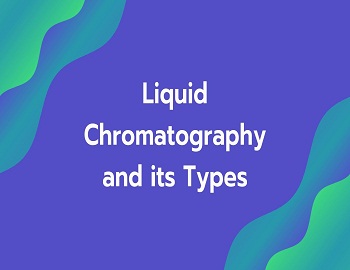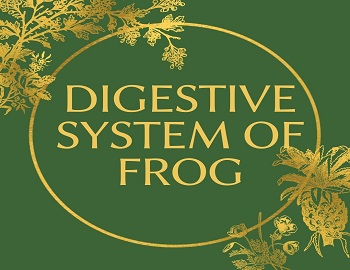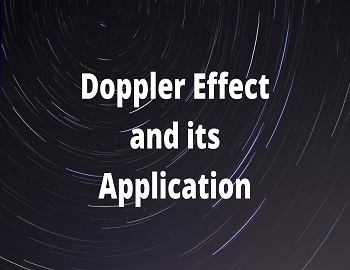Table of Contents
Liquid Chromatography:
Liquid chromatography is an analytical chromatographic technique that is useful for separating ions or molecules that are dissolved in a solvent. If the sample solution is in contact with a second solid or liquid phase, the different solutes will interact with the other phase to differing degrees due to differences in adsorption, ion exchange, partitioning or size. These differences allow the mixture components to be separated from each other by using these differences to determine the transit time of the solutes through a column.
Types of Liquid Chromatography:
The term liquid chromatography (LC) covers a number of separation techniques that employ a liquid mobile phase. A brief description of various types of liquid chromatography techniques is given below-
Liquid-Solid Chromatography (LSC):
It uses a liquid mobile phase and a solid stationary phase. The separation is based on the interactions between the solute and fixed active sites on a finely divided solid adsorbent used as a stationary phase. The rate at which a chemical species travels through an LSC column is determined by the amount of time that the species spends adsorbed on the surface of the solid stationary phase. The stronger the interaction between the mobile phase and the stationary phase, the weaker will be the adsorption of solute on the stationary phase. Solvents for gradient elution in LSC in the order of increasing polarity are n-heptane, carbon tetrachloride, chloroform, 2-nitropropane, nitromethane, propyl acetate, methyl acetate, acetone, methanol, water.
The adsorbent i.e. the stationary phase used may be an active solid having a large surface area such as silica gel, alumina or charcoal. Because LSC depends upon adsorption on the stationary phase, the technique is also sometimes referred to as adsorption chromatography.
Liquid-Liquid Chromatography (LLC):
It uses immiscible liquids for the stationary and mobile phases. The stationary phase liquid is held in place as a coating on a finely divided inert support such as silica gel or kieselguhr. The separation of solutes is accomplished by passing a suitable mobile phase over the stationary phase. The stationary phase may be in the form of a packed column, a paper strip or a thin layer on glass. This type is also known as partition chromatography.
The rate at which a chemical species travels through an LLC column depends upon the relative solubility of the species in the stationary phase as compared with its solubility in the mobile phase. As the relative solubility of the solute in the stationary phase increases, the retention time of the species increases. Because the separation in LLC depends upon the ability of the mixture components to partition i.e. divide themselves between the two liquid phases, therefore LLC is also termed partition liquid chromatography.
Depending upon the relative polarities of the stationary and the mobile phase, LLC techniques can be of the following two types-
(1) Normal Liquid-Liquid Chromatography- In this type, the mobile phase is non-polar whereas the stationary phase is polar. The non-polar solutes prefer the mobile phase and thus, elute first whereas the polar solutes have a preference for the stationary phase and elute later.
The stationary phases used in normal LLC are carbowax, ethylene glycol, etc. Whereas the mobile phases are used as hexane, heptane, benzene, xylene.
(2) Reverse Phase Liquid-Liquid Chromatography (RPC)- In this type, a polar mobile phase and a non-polar stationary phase is used. Thus, the polar compounds show preference to the mobile phase and elute first whereas the non-polar solutes prefer the stationary phase and elute later.
The stationary phases used in RPC include squalane, cyanoethyl silicone etc. whereas the mobile phases used include water and alcohol-water mixtures, acetonitrile and acetonitrile-water mixtures.
Size Exclusion Chromatography:
Size Exclusion Chromatography (SEC) is a chromatographic method in which particles are separated based on their size or in more technical terms, their hydrodynamic volume. It is usually applied to large molecules or macromolecular complexes such as proteins. When the chromatographic medium is a gel the technique is more specifically known as gel permeation chromatography or gel-filtration chromatography. This technique should not be confused with gel electrophoresis where an electric field is used to pull or push molecules through the gel depending on their electrical charges. SEC is a widely used technique for the purification and analysis of synthetic and biological polymers, such as proteins, polysaccharides and nucleic acids. Biologists and biochemists typically use a gel medium, usually polyacrylamide, dextran or agarose, filtering under low pressure. Polymer chemists typically use either silica or crosslinked polystyrene medium under a higher pressure. These media are known as the stationary phase.
The advantage of this method is that the various solutions can be applied without interfering with the filtration process while preserving the biological activity of the particles to be separated. The technique is generally combined with others that further separate molecules by other characteristics, such as acidity, basicity, charge and affinity for certain compounds.
Ion-Exchange Chromatography:
This method uses ion-exchange materials to separate mixtures depending on their acid-base properties and electric charge. Ion-exchangers are water-insoluble polymers in the form of insoluble beads and consist of a polymeric chain composed of carbon atoms to which a number of acidic groups (example, -SO2, -OH and -COOH) or anionic groups (example, -NH3+Cl–) are attached. Ion-exchangers with fixed negative charges can bind mobile cations and are called cation exchangers (example- carboxymethylcellulose and phonated polystyrene); while the ion-exchangers with fixed positive charges can bind mobile anions, are called anion exchangers (example, dimethylamino ethyl cellulose and triethyl-amino polystyrene). An important application of ion-exchange chromatography is the separation of the lanthanides.
Bonded Phase Chromatography (BPC):
In conventional liquid-liquid chromatography, there is the problem of loss of stationary phase from the support material. This problem is overcome by ensuring that the stationary phase is chemically bonded to support material. This type of chromatography is called bonded phase chromatography.
Affinity Chromatography:
In affinity chromatography, a ligand that specifically binds a particular compound or a small group of compounds is bonded to insoluble solid support like polystyrene beads or silica. When a complex biological mixture is passed through a column of such material, only the compounds with an affinity for the bonded groups are retained in the column. After elution of other components of the mixture, the retained compounds can be eluted by a change in the mobile phase. For example- the purification of proteins, enzymes and nucleic acids has been carried out by this technique.
Non-Column or Plane Chromatographic Techniques:
Non-column or plane chromatography is a form of liquid chromatography in which the stationary phase is held on or in a plane rather than in a column. The plane can be a glass or plastic plate (thin layer chromatography) or a piece of filter paper (or cellulose) (paper chromatography). In either case, the mobile phase is a liquid.









Comments (No)